
Stinging Insects: Identification, Dangers, and Effective Removal Practices for Homeowners
Learn to identify and safely eliminate hazardous stinging insects like bees, wasps, and hornets from your home.
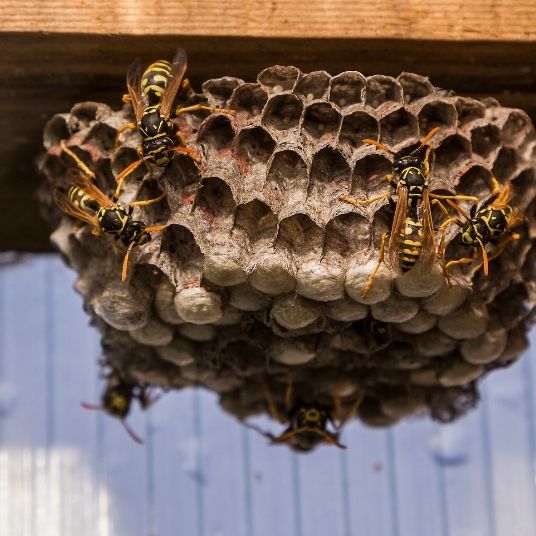
Wasps build nests in sheltered locations such as under eaves, in trees, or underground.
Primarily carnivorous, wasps feed on insects and occasionally consume nectar from flowers.
Lifecycle starts with the queen laying eggs; new queens overwinter to restart the cycle.
Common wasp species in Canada include the aggressive yellowjackets, the architecturally adept paper wasps, and the imposing bald-faced hornets. Yellowjackets frequently nest underground or in secluded dark spaces, paper wasps construct open, exposed nests primarily under eaves and overhangs, and bald-faced hornets build large, visible nests in trees or on buildings. These species are not only widespread but also highly active during the warmer months, increasing their interactions with humans.
Wasps are notorious for their painful stings, which can lead to significant discomfort and serious allergic reactions in some individuals. During late summer and early fall, wasps become particularly problematic as they are more likely to interact with humans, potentially leading to increased stinging incidents during outdoor activities. Their ability to sting repeatedly makes encounters with wasps especially daunting and can disrupt outdoor living and working environments.
Wasps are distinguished by their sleek, elongated bodies with a narrow constriction between the thorax and abdomen, making their waist appear pinched. They range from 13 mm to 40 mm in length and are known for their two pairs of wings, with the forewings being noticeably larger. The coloration of wasps is typically vibrant, featuring patterns of yellow, black, and occasionally reddish tones, which help in identifying different species and act as a warning for potential predators.
The level of concern regarding wasps depends significantly on their proximity to human activity and the potential for allergic reactions within household members or guests. Wasps can be beneficial by controlling insect populations; however, their potential for aggression and painful stings requires proactive management, especially in residential and recreational areas. In cases where nests are near high-traffic areas, professional removal is advised to ensure safety and reduce the risk of stings.
Wasps are attracted to residential areas due to the availability of food sources, such as sugary substances and other insects, and suitable nesting sites. Homes with gardens, exposed food, and ample nesting sites like eaves and attic spaces are particularly attractive to wasps. Their presence is often indicative of an abundance of accessible food or the existence of undisturbed areas suitable for nest construction.
To prevent wasps from establishing nests or foraging near human-occupied areas, it is crucial to manage waste effectively by securing trash bins and reducing food exposure, especially during outdoor activities. Regular inspections for early nests and prompt removal are effective strategies. Additionally, sealing off entry points in homes and buildings and using wasp-repellent products can help keep these pests at bay.
Pestcheck’s wasp inspection includes a detailed examination of your property, targeting common nesting sites such as eaves, attics, and outdoor structures. Our specialists thoroughly document all evidence of wasp activity and nests. This comprehensive inspection provides a clear understanding of the infestation, allowing us to develop a precise, effective treatment plan to safely eliminate wasps and their nests.
Pestcheck’s wasp control strategy uses safe and effective techniques to target and eliminate wasps and their nests. Our treatments are applied directly to nest sites and surrounding areas, ensuring thorough eradication. This method not only removes existing wasp infestations but also prevents future ones, creating a secure, wasp-free environment around your home and ensuring long-term protection.
Pestcheck’s follow-up services include routine inspections to monitor treated areas and confirm wasps do not return. We check for signs of new nest-building activity and reinforce preventive measures as necessary. This proactive approach adapts to seasonal changes, ensuring continuous protection and keeping your property wasp-free year-round, providing peace of mind and a safe living environment.
The main difference is that wasps feed protein, in the form of other insects – especially larvae, to their offspring. This is not the case with bees, they collect pollen and produce honey.
It may surprise you to learn that hornets are actually wasps! Yes, you read that right. Hornets are a subset of wasps and are a breed of special wasps living in large, highly organized colonies.
The main difference between wasps and hornets is their size and coloring. On average, hornets are a lot larger than wasps and usually come in a black and white or brownish red coloring. Wasps appear in a variety of colors, depending on the species.
It depends on the type of wasp, but most commonly they may be found hanging from structures such as a branch or fascia of a building, or they may be in the ground. Wasps may also nest in compost heaps.
The queens hibernate over winter to emerge and establish new colonies the following year. You could estimate that a queen might live for as long as 12 months.
Worker wasps live 12 -22 days, and the males have slightly shorter lives.
It is pretty difficult to give a generalized answer around the diet of wasps as this can vary between different species. Generally, the wasps found in your garden will feed on nectar, fruit, insects and sugar.
Did you know that paper wasps feed on carrion, which is found in dead flesh and often go hunting for deceased insects to feed on?
Mild and moderate reactions to wasp stings can be treated with a few simple remedies. However, it is highly advised that if you are starting to show the signs of an allergic reaction to a wasp sting you visit your doctor immediately.
You can treat wasp stings by:
Check out our blogs and articles to learn more about keeping your home pest-free and your family and pets safe! We’re sharing our expert advice and latest news from behind-the-scenes.

Learn to identify and safely eliminate hazardous stinging insects like bees, wasps, and hornets from your home.
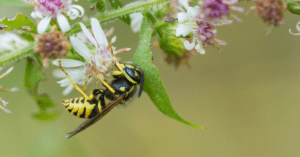
Wasps, hornets, and bees may seem like the same pesky insects we tend to shoo away during the summer months, but in reality, they’re vastly different creatures, each with a
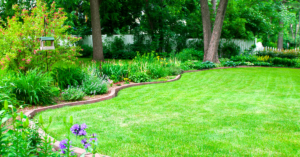
Pest control is an essential aspect of maintaining a healthy and comfortable home. However, traditional pest control methods often rely on chemical pesticides that can have negative effects on the
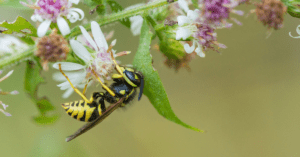
Spring is upon us and with it, come a variety of pests that can become a nuisance to homeowners. From termites to wasps, fleas, carpenter ants, stink bugs and more,
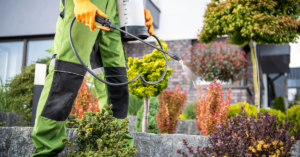
When it comes to pest control, timing is everything. With the right strategy and schedule, a homeowner can keep their home free from pests year-round. But focusing pest control efforts

Pest control is an important aspect of maintaining a healthy and clean living environment. It involves the use of various methods to control or eliminate pests such as insects, rodents,

Pest control is a vital aspect of maintaining a safe and healthy environment for humans, pets, and plants. Pests can cause a variety of problems, including property damage, food contamination,

Pests can do a lot of damage to your home and property. From contaminating food to spreading diseases, they can make your home or business unhealthy and uncomfortable for you
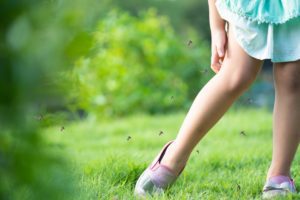
Summer is here. This is the most common time to see increases in insect activity. Despite most insects having an important role in the economy, when they decide to invade